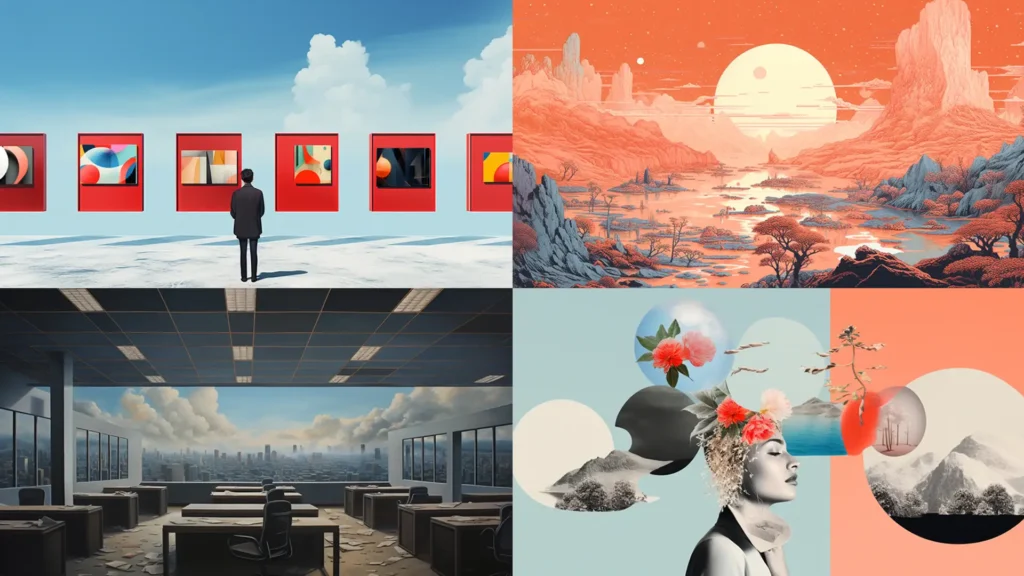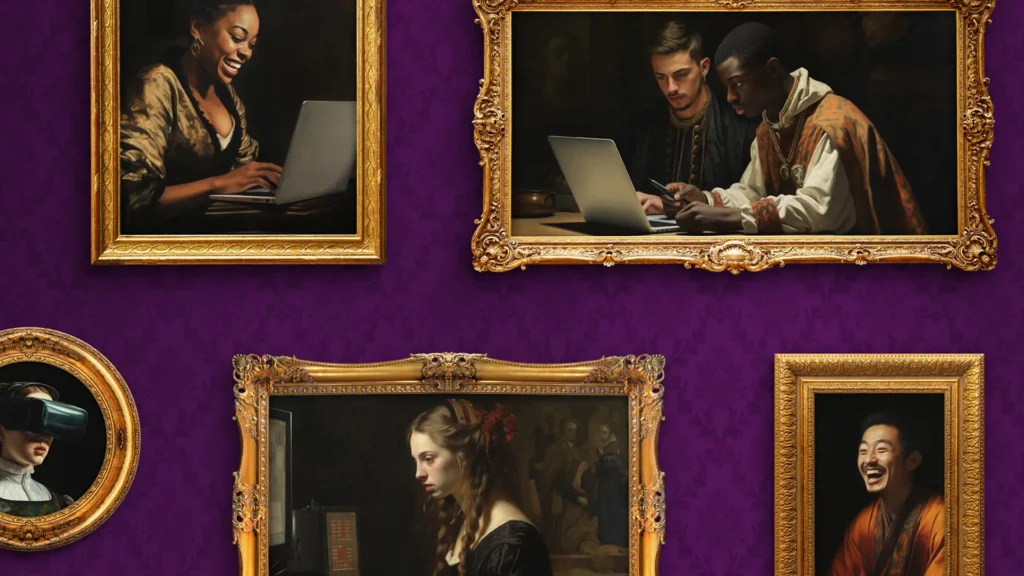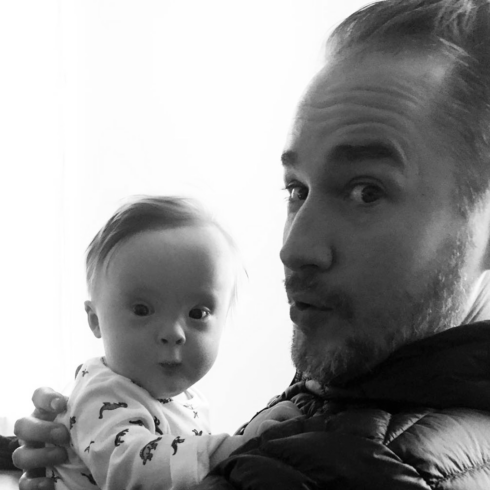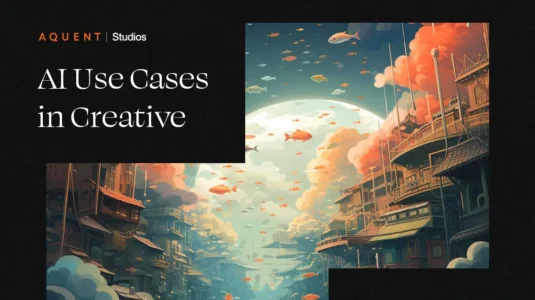

Key Takeaways
- Harnessing the power of AI requires the cultivation of a growth mindset.
- Advancement in the AI journey comes from experimenting and learning from both successes and failures.
- Adoption challenges include shifting mindsets, identifying the best applications, building knowledge, and staying up to date.
- Adoption benefits from fostering an openness to exploration and understanding AI's capabilities and limitations.
- As AI infiltrates execution and production and speeds up processes, it will reshape design roles and skillsets.
- For design teams adopting AI, we recommend starting small, securing leadership buy-in, and pursuing continual learning.
Listen: A growth mindset is key to generative AI expertise.
At Aquent, we've closely observed the evolution of generative AI across text, image, and video platforms over the last year. Our creative team's journey began with an excited curiosity fueled by our CEO, John H. Chuang, and quickly evolved into a deep-rooted interest as we recognized the game-changing potential AI held for the world of design, creative, and marketing work. The exponential pace of AI's development and its imaginative capabilities have compelled us to continually experiment and learn, constantly keeping us on our toes.
Today, AI is not just a passing interest for us—it has become a part of our creative process and workflow, and we have used it to drive powerful outcomes. Our experiences have convinced us that AI technologies are tools for creators to put to work, much like Adobe Creative Suite (which also utilizes AI). We assert that AI is a legitimate technology that can be adopted and integrated by creative and design teams and, rather than replacing people, enhance their abilities to perform their jobs better. Just like any new technology, one of the most critical factors in developing new skills and expertise is having a growth mindset.
This blog post aims to delve deeper into our journey with AI, highlight ways we are using it at Aquent, and provide insights into how you, too, can cultivate a growth mindset for adopting AI at your company.
Integrating AI tools in creative and design workflow

Harnessing the versatile power of AI, we have mindfully incorporated the technology into our workflow at Aquent across the entire creative journey. From concept to execution, AI tools have become an integral part of our process, enhancing both our creativity and efficiency.
Text generation with AI
We've integrated AI tools like ChatGPT, leveraging it for various conceptual activities such as idea generation, copy iteration, and prompt development.
- Conceptual activities: From a conceptual standpoint, we utilize AI in the brainstorming phase to cross-reference ideas and to recognize familiar patterns of ideas that could be deemed cliché. Once we feel we have a good idea, AI can also help us expand it to create variants and alternatives that take it higher or in new directions. However, it's important to note that we do not rely on these kinds of tools to generate our ideas exclusively—we believe in the intellectual and creative potential of the human mind. That is where the most original, strategic, and clever ideas always come from.
- Copy iteration: As an iterative writer's tool, AI comes in handy when we need to reword or rephrase complex paragraphs. It assists us in creating alternative titles or headlines, and for A/B testing. When we feed it our copy, it can, at times, enhance the creativity and diversity of our content. With our ethical POV guiding us, we don't rely solely on AI to write copy. We believe that is a job for humans, too.
- Prompt development: We also employ AI to develop prompts for image generation. These prompts, often crafted by ChatGPT, go beyond the conventional and challenge our creative boundaries. We then use these prompts in another tool like Midjourney to generate images. To ensure we explore a broad creative territory, we often test AI-generated prompts alongside manually written ones. Oftentimes, they end up being fused together and are then experimented with and refined further.
Image generation with AI
We've incorporated tools like DALL-E and Midjourney for image generation, and Adobe Firefly for image editing, refinement, and production. These tools assist us in both conceptual activities like idea generation and executional activities like image creation, iteration, and manipulation.
- Idea generation: AI-powered image generation tools help us swiftly develop visuals related to conceptual work, such as big idea brainstorming. The true power here lies in AI's ability to rapidly generate and explore “what if?” type ideas. These tools enable us to visualize possibilities instantly, offering a unique approach for idea conceptualization compared to traditional methods like sketching, storyboard creation, and mood boards from collected swipe or stock imagery.
- Image creation: When appropriate conceptually, the same image generation tools are also utilized to craft imagery directly used in our creative and marketing work at Aquent. The quality, resolution, and potential of AI-generated images have significantly improved over the course of this year, making them a serious contender in the realm of design and creativity.
It is important to note that generating imagery with AI tools requires both brands and creators to be mindful of legality, ethics, and appropriate uses of the technology. Because AI has been trained on everything available on the web, that includes intellectual property. And, as we have seen, AI can be used to create disruptive deepfakes, to infringe on copyrighted material, and to emulate an artist's or illustrator's style while effectively stealing from them. At Aquent, we approach the use of AI tools with reflective consideration to inform our point of view and process as an organization:
We do not ask AI to create anything that knowingly infringes upon copyrighted material. We do not ask AI to imitate, replicate, or duplicate an artist's or illustrator's style. And we don't use artists' names or work in our prompt engineering. We are aware of the looming lawsuit against Midjourney, and that artists' names can be found within the platform to use.
We find this news concerning, and our perspective is this: If you want a specific artist's style in your brand work, don't copy them—hire the artist and pay them for it. The images we generate are created from prompts that use a combination of subject matter descriptions, like “a sailboat floating in the sea during a moonrise,” and style descriptions, like “pencil sketch with a watercolor wash.”
AI enhancing creativity and efficiency

One of the most noteworthy instances where AI significantly enhanced our creative potential was during the development of our “Renaissance of Teamwork” concept to position our Talent Insights Report this past year. We aimed to create a series of oil paintings capturing the essence of 14th-century masterpieces, but with a contemporary twist. And because Renaissance paintings are in the public domain, we were comfortable asking AI to emulate specific styles found in famous masterpieces. This concept, with synergy found between the idea and AI's potential to bring it to life, is a good example of putting the technology to use in the right way.
In a traditional scenario, realizing our concept would have been a time-consuming and costly endeavor—and it wouldn't have reasonably been produced. However, generative AI enabled us to achieve our vision within a fraction of the time and cost. Through extensive experimentation, we crafted prompts that directed AI to produce the consistent outcomes we envisioned. The result? Stunning Renaissance-like paintings replete with chiaroscuro that, from afar, could make people think they are by DaVinci or Michelangelo. This was a turning point for us, highlighting the immense potential of AI in enhancing creative possibility and efficiency in design.
Another example of how AI enhances our creative potential is Aquent's blog, where we use AI tools like Midjourney and others to create dynamic imagery that brings our thought leadership content to life. To support our publishing cadence week to week, we use generative imagery tools to create a range of artwork, activating diverse subject matter in a multitude of different illustration styles. This perennial work supporting our blog allows us to continually test and refine our prompts, focusing on the combination of subject matter and stylistic description to create unique and consistent outcomes.
As we continue to explore and embrace AI's potential, we look forward to witnessing more ‘wow' moments by pushing the boundaries of what's possible.
Learning and adopting new AI technologies
Embracing AI in creative and design is not without its challenges. From shifting mindsets to staying updated with rapid technological advancements, the journey toward AI integration can be daunting and filled with failure and success. It often involves stepping out of our comfort zones and diving into the unknown. However, the key to successful adoption lies in continuous learning, experimentation, and not giving up. By sharing our first-hand experience in overcoming these hurdles, we hope to shed some light on how to navigate the process with grace.
Shifting mindsets: Embrace, don't fear AI
One of the initial challenges we faced was a defensive posture among our creative team members. It is important to acknowledge that some creatives feel threatened by generative AI and think that it will replace them, or they view it as a competitor rather than a tool that augments and enhances their capabilities.
These feelings are real and matter a lot. And they need to be discussed transparently. A key to overcoming these feelings was fostering an environment that encouraged openness to new possibilities while emphasizing that AI is here to enhance, not replace, creative potential and our creative and design team.
Our team is encouraged and supported to overcome emotional roadblocks so they can embrace AI tools to enhance their potential and their abilities. Keeping an open and ongoing dialogue around all of this as we explored was also important.
Identifying the right application
Determining where and how best to apply AI was another hurdle we had to overcome. Not every aspect of the creative and design process will benefit from AI integration, so it's crucial to identify where it can add the most value and where it makes the most sense strategically. This required us to experiment, test, and iterate until we found the sweet spot where AI could truly shine and assist our team.
Building knowledge and understanding limitations
Acknowledging what AI can do well and what it struggles with is critical. It helps set realistic expectations and prevents over-reliance on AI. We invested time in understanding the capabilities and limitations of AI, which helped us use it as a tool effectively, complementing our team's skills rather than trying to replace them.
Staying current with rapid advancements
With AI technology evolving at a breakneck pace, staying up to date with new features and functions is both a challenge and a necessity. We found that the best way to keep pace with this rapid evolution is to use and experiment with the technology regularly, especially as updates and new features are pushed out. This hands-on approach not only helps us stay current but also allows us to constantly explore new ways AI can enhance our creative process. We also keep up with AI's development and the latest trends by reading industry-specific blogs, following thought leaders on LinkedIn, and examining other creators' prompts and success stories.
Creating guidelines and guardrails
As noted above, it is important to have an ethical point of view on how AI will be used by your team and organization at large. It is a powerful technology that requires both technical skills and ethical sensibilities. Having guidelines established and understood by all is important to ensure team members are using AI tools in ways that are beneficial and not harmful to an organization. Continuing to review guidelines—and evolving them as the technology develops—is critical to encouraging AI adoption while protecting your brand and business. As we urge our team members to explore and experiment with AI, we also value their perspectives on ethical use, its appropriateness, and its limitations. This feedback loop is critical to upholding our standards as a team.
Harnessing AI's potential: Future use and adaptation
AI allows designers to shape ideas instantly, iterate on them rapidly, and understand conceptual potential faster than ever. The technology fosters an attitude of ‘let's try this too,' enabling rapid exploration of concepts during the discovery phase. It's akin to having additional hands that can simultaneously explore multiple “what ifs?,” allowing designers to do more, try more, and uncover more.
Enhancing execution and production
AI's influence extends beyond concept development, permeating design execution and production. Traditional tools like Adobe Creative Suite are continually enhanced with AI capabilities, while new tools such as generative image technology keep emerging. These advancements simplify design tasks and significantly accelerate production at both operational and task levels.
Shaping new roles and skill sets
As AI becomes a staple in the design process, AI expertise will increasingly be a common requirement in creative job roles. We also anticipate the emergence of new roles designed specifically to leverage AI technology. This shift signifies a significant evolution in the professional arena of design, where AI literacy becomes as fundamental as traditional design skills.
Final thoughts on AI adoption
For creative and design team leaders embarking on AI adoption, our advice is straightforward: don't wait any longer. Start small, focus on what aligns with your team and business, and initiate the learning and people development. Ensure you have alignment with your executive leadership team and legal counsel to address potential legal implications. It's essential to foster an organization-wide understanding of AI, how it can be applied, and how it will be used.
AI is revolutionizing the world of creative and design. As we continue to explore and experiment with AI, we anticipate a future filled with boundless possibilities, empowering design teams like never before to discover, realize, and achieve new things.
This blog talks about generative AI tools and their potential applications. As these technologies rapidly evolve, we encourage you to research the latest developments in terms of their capabilities, safety and security, and ethical use. For more information on the responsible use of generative AI, download our whitepaper, Using Generative AI for Design: Legal Considerations and Best Practices.
Related

Great brand collaborations are the best to strengthen identity.
Design & Experience, Insights & Trends, Marketing & Creative, Beauty and Fashion

Consumer demand and policy are driving EV market growth.
Development & Technology, Insights & Trends, Automotive

Are you missing opportunities to improve health screenings?
Design & Experience, Marketing & Creative, Health



